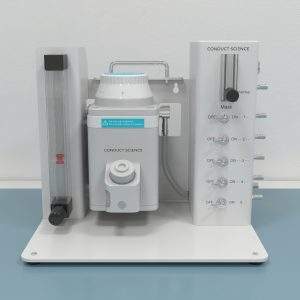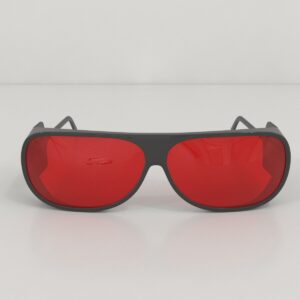$10,750.00
The application of optogenetics has been rapidly developing since 2010, it’s research field covers several classical experimental animal species, such as flies, mice, rats, zebrafish, primates (Monkey, cynomolgus monkey, rhesus monkey, etc.). These animals generally have the advantages of short developmental and reproductive cycle and easy integration of foreign genes, thus facilitating the introduction of Photosensitive Protein Gene and the screen of the state of expression.
AfaSci, Inc. is a biopharmaceutical company focused on discovering and developing innovative therapies for pain management and neurological disorders. Based in the San Francisco Bay Area, AfaSci specializes in non-opioid, non-NSAID solutions to address chronic pain, neuropathic conditions, and central nervous system diseases. Their research is centered around peptide and small molecule drugs, with several promising preclinical candidates targeting specific ion channels and enzymes involved in pain and inflammation. With a strong intellectual property portfolio and strategic partnerships with academic institutions, AfaSci is dedicated to advancing novel treatments that aim to improve patients' quality of life while reducing reliance on traditional painkillers.



The application of optogenetics has been rapidly developing since 2010, its research field covers several classical experimental animal species, such as flies, C. elegans, mice, rats, zebrafish, and primates (Monkey, cynomolgus monkey, rhesus monkey, etc.). These animals generally have the advantages of the short developmental and reproductive cycle and easy integration of foreign genes, thus facilitating the introduction of the Photosensitive Protein Genes and the screening of the state of expression.
| Product Name | SKU | QTY |
|---|---|---|
| Arbitrary Waveform/Function Generator-20MHz | RWD-AFG2021-SC | 1 |
| 473nm Blu-ray Laser-50mW/power-adjustable/stable<1% | RWD-R-LG473-50-A1 | 1 |
| 532nm Green Laser-50mW/power-adjustable/stability<1% | RWD-R-LG532-50-A1 | 1 |
| FC/PC Optic Fiber Patch Cables(m)--200μm/0.22NA | RWD-R-FC-PC-N2-200-L1 | 1 |
| 1x1 FC-FC Rotary Joint | RWD-R-FC-1x1 | 1 |
| Optic Fiber(m),200 um,LC/PC Adapter-Ø1.25mm/0.22NA | RWD-R-FC-L-N2-200-L1 | 1 |
| Fiber Ceramic Cannula-Ø1.25mm/200μm/0.22NA (20/pkg) | RWD-R-FOC-L200C-22NA | 10 |
| Ceramic Ferrules Protective Cap.Ø1.25mm, pkg of 200pcs | RWD-R-DC-1.25 | 1 |
| Fiber Stripper- suitable for 100um - 800um fiber | RWD-R-OFT-600 | 1 |
| Laser Goggles Against Blue and Yellow Light | RWD-R-LS-Y | 1 |
| Laser Goggles Against Blue and Green Light | RWD-R-LS-G | 1 |
The optogenetic stimulation kit aims to modulate the activity of excitable cells by combining genetic and optical techniques. Optogenetics, a method to turn the neurons on or off using light, was developed by Edward Boyden and Karl Deisseroth in 2005. It is a photostimulation technique that allows the modulation of neuronal activity by light. A particular set of light-gated proteins, called microbial opsins that get stimulated by light, are expressed in neurons. An optogenetic stimulation kit comprises a laser source to excite/inhibit target cells, optic fiber, an optogenetic probe, cannulas, ceramic ferrules, and laser goggles. The researchers can utilize this kit to conduct neural modulation experiments in rodents, zebrafish, and primates.
In classical optogenetic experiments, microbial opsins are genetically targeted, and wavelengths of light are required to expose them in neurons. Optogenetic stimulation facilitates bidirectional neural function management and genetic targeting of specific cell types. There are two types of light-activated proteins, i.e., opsins: type I is present in fungi, algae, and prokaryotes, and type II in animals. However, type I opsins are known as “rhodopsins” as they contain both opsin protein and a light-sensitive chromophore. These rhodopsins are frequently used in optogenetic stimulation experiments (Mahmoudi et al., 2017). The technique follows the principle that the opsins are activated when a particular wavelength of light is incident on the targeted neuron cells. These activated opsins cause depolarization and hyperpolarization of the cell membrane, thereby silencing or exciting the neurons within a millisecond.
While performing any experiment using an optogenetic stimulation kit, a researcher should take into account the following considerations.
Neuroscience research vastly employs the use of optogenetic stimulation kit. The kit mainly comprises an optical cannula, optogenetic probe, laser source, optic fiber, ceramic ferrules, and optogenetic laser goggles to protect the personnel from harmful laser rays. An optogenetic stimulation kit includes lasers of different wavelengths lying within the visible light spectrum. The laser source can be blue (450-480nm), green (520-560nm), yellow (570-600nm), or red (600-780nm) depending on the opsins being expressed. Sometimes, different wavelengths can be combined to excite or inhibit cellular responses. In such cases, the researchers can use compound wavelength lasers to adjust between wavelengths instantly.
The optogenetic stimulation kit offered by Conduct Science comprises a 20MHz arbitrary waveform generator, power adjustable 473nm Blu-ray laser, 532nm green laser, optic fiber, optic fiber patch cables, rotary joint, 10 packs of ceramic cannulas, a pack of 1.25mm ceramic ferrule protective caps (containing 200 pieces), fiber stripper, laser goggles against blue and yellow light, and laser goggles against blue and green light. The kit is well-designed to cover most of your optogenetic experiment needs. However, some accessories, like a laser power meter, can be purchased separately. This optogenetic stimulation kit is suitable for classic experimental animals such as flies, rodents (rats and mice), zebrafish, and primates.
Optogenetic stimulation kit has manifold applications in the field of neuroscience. It has widely been used in labs to excite or inhibit spatially defined neuronal populations over extended durations. Furthermore, it has many applications in vitro electrophysiological recordings and calcium imaging in behaving animals. In general, the applications of optogenetic neuromodulation can be divided into three categories.
An optogenetic stimulation kit can be used to control both activation and inhibition of neuronal activity within the duration of a millisecond. The firing pattern produced by a sequence of light pulses reveals a specific neural code. This process is called “cracking neuronal codes.”
This kit can assess neural circuits in animal models of various mental disorders and discover treatments for these diseases.
Bidirectional neuronal activity modulation has been possible by employing optogenetic tools (Mahmoudi et al., 2017).
Optogenetic stimulation kit presents several advantages over other neural stimulation techniques like deep brain stimulation (DBS). Optogenetic stimulation is more specific, whereas other methods can stimulate cells other than target cells or may fail to identify specific cells. Focused, high-intensity light coming in a single spot from the laser source helps target the desired cell types. This technique provides excellent spatiotemporal resolution. However, a potential disadvantage is that exposure to high-intensity lasers can damage the tissue. Therefore, achieving sufficient light exposure to neuromodulate the desired cell without damaging the neural cells is a real challenge for neuroscientists (Mahmoudi et al., 2017).
Mahmoudi, P., Veladi, H., & Pakdel, F. G. (2017). Optogenetics, tools and applications in neurobiology. Journal of medical signals and sensors, 7(2), 71.
Ferenczi, E. A., Tan, X., & Huang, C. L. H. (2019). Principles of optogenetic methods and their application to cardiac experimental systems. Frontiers in physiology, 10, 1096.
| Brand | RWD |
|---|
You must be logged in to post a review.
There are no questions yet. Be the first to ask a question about this product.
Reviews
There are no reviews yet.